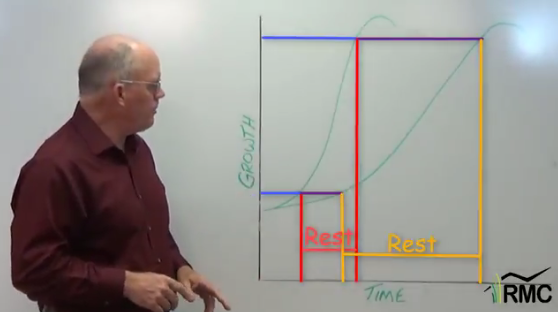

Michael and Amy Billings know where their buffalo roam. They control where, too.
It is all part of a rotational grazing system at their farm. The couple, who own Buffalo Lodge along with Ryan Dunn, began working with NRCS in 2011. At the time, they had a herd of 25 buffalo roaming 80 acres, but they were looking for a better way to more effectively use the forage on their farm. Working with the USDA’s Natural Resources Conservation Service, the Billingses were able to design and gain partial funding for a rotational grazing system at their farm and event venue, near the boundary of Johnson and Cass counties in western Missouri.
The couple soon acquired another 105 acres, and used NRCS and Johnson County Soil and Water Conservation District assistance to install cross-fencing, a livestock water distribution system, tire tanks and pasture seeding — including conversion of some acres to native warm-season forages. Today, they are up to 100 buffalo, which rotate through 17 paddocks on 185 acres.
Group grazing
“We split the buffalo into two herds on opposite ends of the farm, and rotate them counterclockwise,” Michael says. “The flow has worked very well.”
He moves the buffalo to the next pasture every couple of days, giving pastures plenty of time to rest before the other herd comes around. It’s good for the grass, and it seems to satisfy the bisons’ natural instinct to stick close together and roam as a group.
“The rotational system is in sync with the animals’ instincts because they feel like they are on the move,” he says.
Developing a grazing system

James Watterson, a NRCS resource conservationist, said that without the rotational grazing system, the land probably would not have supported many buffalo.
“Before Michael and Amy purchased the farm, the soils were poor and there were poor stands of grass. It was mostly broom sedge,” Watterson says.
Michael went to grazing schools offered by NRCS, and spoke often with Watterson about what he could do to make a positive impact on the land.
“Aside from the financial aspect, having James’ knowledge about the management aspects is a great asset,” Michael says. “Bison producers by their nature are interested in improving natural resources with their operations, and he has helped me do that.”
Watterson says a good management system is all the farm really needed.
“They interseeded some clover and planted some warm-season pastures, but really the pastures just needed rest,” Watterson says. “It’s amazing what the change in management has done to change the composition of those pastures.”
It has provided a good place for Michael and Amy’s buffalo to roam.
Expanding the operation

The couple recently purchased another 150 acres to add more paddocks, water pipelines, tanks and cross-fencing so that they can expand their herd. Part of the plan includes converting some of the pastures to warm-season grass and forbs, and establishing pollinator habitat and wildlife structures. It’s being done in conjunction with the idea of implementing walking and hiking trails and activities to further enhance the agro-tourism aspect of their farm.
Michael and Amy sell their buffalo meat at the Brookside Farmers Market in Kansas City. But during the three years the buffalo are on pasture, they are part of a buffalo theme to their upscale venue for weddings and other events. The events business and the farm work together to provide a unique agro-tourism experience for the couple’s clientele.
NRCS Staff are available to provide you with technical assistance to enhance your operation and success. Here’s a map you can use to locate the office nearest you. Just click on your state, and then on your county to get the list you need.



